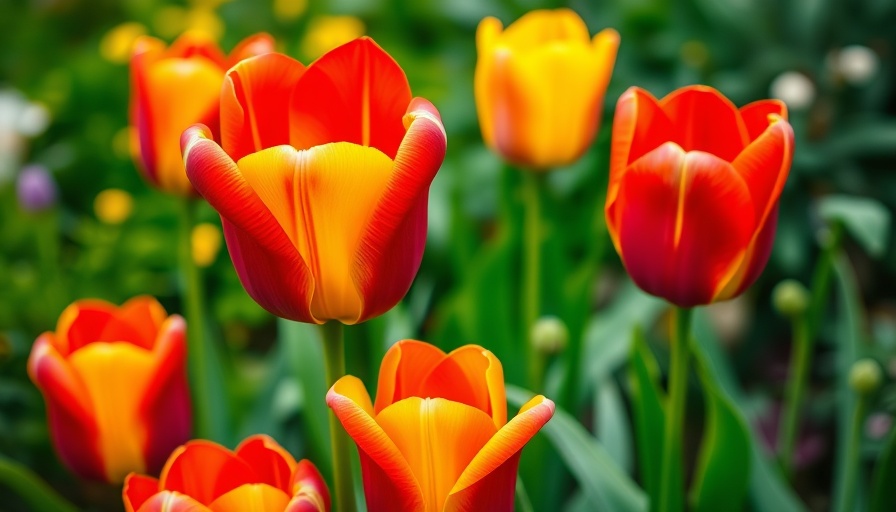
Creating Your Tropical Oasis: A Guide to Vibrant Gardening
If you've ever dreamt of turning your backyard into a lush tropical paradise, you're not alone. Many gardeners feel inspired by the vibrant foliage and exotic plants that scream summer. But what if we told you that you can infuse a piece of the tropics into your garden, even in the colder months? In this guide, I’ll walk you through some key insights based on a recent day spent exploring the stunning bromeliad collection at the Royal Botanic Gardens in Sydney, and how you can embrace this aesthetic at home.
In 'Turning A Garden Into A Tropical Oasis | Great Home Ideas', the discussion dives into creating beautiful tropical gardens, exploring key insights that sparked deeper analysis on our end.
Understanding Bromeliads: The Perfect Tropical Plant
Bromeliads are the ultimate choice for homeowners who wish to create a tropical vibe. As showcased during my visit, they come in a dazzling array of colors—including eye-catching purples and variegated greens—making them the perfect plants to liven up your garden. According to horticultural experts, these plants are incredibly versatile and can thrive indoors or outdoors, even in frost-prone areas, making them ideal for a variety of Australian climates.
One misconception is about their care. Many believe bromeliads require constant watering, but these plants prefer their roots to stay dry. Instead, focus on keeping the 'cups' of the bromeliads filled with water while ensuring the soil is well-draining to prevent root rot. Using an orchid or succulent mix is highly recommended for their unique requirements.
Design Tips for Your Tropical Garden
Once you’ve chosen your plants, it's time to design your tropical oasis. As discussed in the video, a tree can serve as a perfect backdrop for mounting bromeliads. By attaching them to branches, you can mimic the beautiful displays seen in the Botanic Gardens. It creates height in your garden, ensuring the taller plants catch the eye first and provide a dramatic focal point.
Consider grouping various plants together to enhance the lush look. Combining different foliage types and sizes creates depth and interest in your space. As you plant, remember to orient the 'cups' of your bromeliads upwards to collect rainwater effectively.
Container Gardening: When Space is Limited
If you’re short on land but craving that tropical essence, container gardening is a fantastic alternative. Large pots with adequate drainage can house varieties of bromeliads and other tropical plants, allowing for a unique, vibrant display. Utilizing stylish containers not only ensures your plants thrive but also enhances the aesthetics of patios and balconies.
Whether you're a novice or an expert, integrating bromeliads and other tropical plants into your container garden will undoubtedly make a splash this season.
Incorporating Sustainable Practices
Alongside the visual appeal, sustainable gardening practices can significantly enhance your growing experience. Keeping an eye on soil health through organic methods boosts the vibrancy of your plants. A regular watering schedule is crucial, and using drip irrigation can both reduce water wastage and support plant growth efficiently.
Additionally, consider mulching around your plants. This not only aids in moisture retention but also suppresses weeds, allowing your tropical flowers and foliage to take center stage without unnecessary competition.
Conclusion: Dive into Your Gardening Adventure
Inspired yet? Transforming your outdoor space can be fun and rewarding, especially when you embrace the idea of creating a tropical oasis at home. With vibrant plants like bromeliads, proper care, and thoughtful design, your yard can be a beautiful escape all year long.
Don't forget to explore new gardening techniques, such as drip irrigation and organic fertilizing, to maintain a healthy landscape while positively contributing to the environment.
So grab your gardening tools, plan your design, and start this exciting journey of crafting your tropical retreat!
 Add Row
Add Row  Add
Add 




Write A Comment